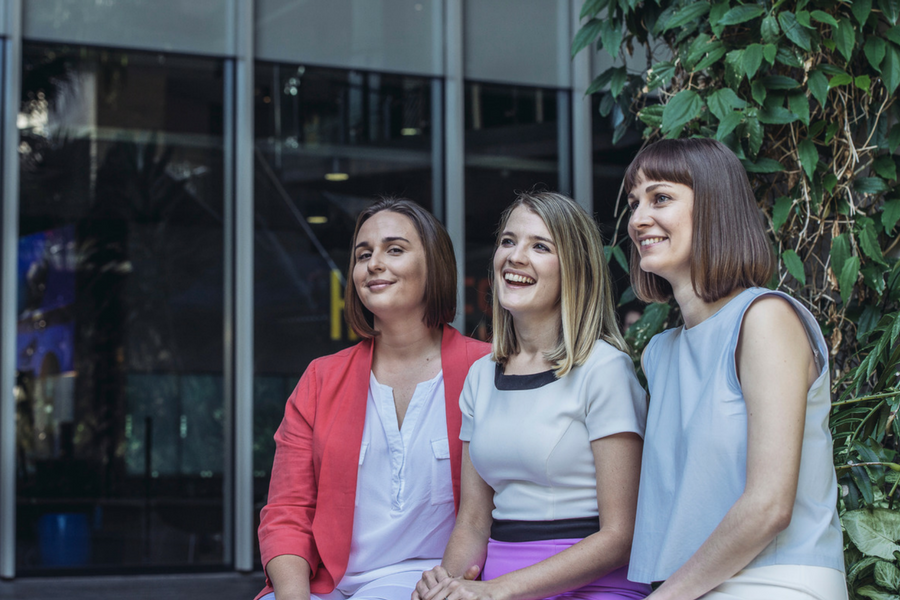I was never much good at maths at school; I wasn’t terrible, but it didn’t come naturally and I didn’t like it enough to study hard at it, so in year 11 I chose to study General Maths for the HSC.
Despite the fact that, at my selective school, it was seen by other students as a subject you just do to make up your units, the things we studied in General Maths were actually quite helpful for, well, general life; we learned how to calculate interest on home loans, for example, which I thought would be infinitely more helpful than understanding whatever integrals are and all the other complicated things kids learned in 2 unit maths and beyond.
For many students, this disconnect between the maths textbook and real life poses a significant barrier to engaging with maths, and despite the increased focus on encouraging kids into STEM fields of late, a four year study from the University of Newcastle found that students have a “dire” lack of interest in pursuing a maths-related career, with just eight of 6492 students stating they wanted to work in the field after finishing school.
Hoping to help students engage with maths by helping them relate it to real life is Australian startup Machinam. Founded by senior engineer Claire Bennett and civil engineers Jillian Kenny and Felicity Furey, the startup has created an app full of content that takes what students are learning in class and applies it to real world problems.
Though she ended up becoming an engineer, Furey said that for much of high school she was one of the many students who thought maths was boring and couldn’t see how it related to her life or her future.
“In year 12, my physics teacher Mr Adamson said to me, ‘Felicity, I think you should do engineering’. I thought, ‘Engineering? But you have to be really smart, and it’s really hard, and who wants to do maths all day? Boring!’,” she said.
“But that conversation sparked a curiosity in me and I ended up in Civil Engineering at university. When I saw that I could use maths and science to solve problems for people and communities I loved it.”
That eventually got Furey thinking that there would surely be lots of students like her, only they don’t have a teacher like Mr Adamson to help them discover the value of maths – and that’s where Machinam comes in.
Its app In Real Life works alongside the Australian curriculum to help students apply what they’re learning to the real world.
“Usually maths problems are, ‘if you throw a ball up in the air with a speed of x, how high will it go…’. In the real world you probably wouldn’t bother calculating that, you would just throw the ball,” Furey explained.
“Instead, our questions are, your town is running out of water and you need to figure out how long is left until the dam is empty. You use content from the Australian Curriculum, such as topics like area and volume, to figure out that there is just two years water supply left.”
Another example: you take on the role of a fashion designer creating one of the statement pieces for your winter collection – a women’s jacket. You use trigonometry to design the perfect neckline ruffle feature and the concept of similar triangles to grade the pattern for different sizings.
“You’re learning about something that’s of interest to you, while also learning the maths skills you need,” Furey said.
Work on In Real Life began in 2015; Machinam partnered with myEd to develop the platform, helped along by a grant from the Foundation for Young Australians and angel investment from Andy Greig of ACAC Innovation.
To create the scenarios, Furey said the startup has put together a team of young engineers, scientists, educators, and designers who bring a fresh perspective to the challenge, drawing on their own experiences to develop content that related to real life and future careers.
After a scenario is drafted, it is matched to the curriculum and reviewed by classroom maths teachers before it’s finalised and incorporated with a visual design. Content is, for the moment, focused on year 9 students.
Students using In Real Life can simply login and find a range of scenarios their teacher has shared with them, working through them either individually or with others, with their teacher receiving real-time feedback on their progress.
Thanks to the feedback system, teachers are able to assign scenarios to students based on their individual learning pathways. As Furey explained, they have a full view of class progress through a markbook, which provides a “granular breakdown” of each student’s progress. They can mark and comment on student work, or choose for students to self-assess against the fully worked solutions.
The startup has conducted a number of school trials, which Furey said focused on validating the app and refining content.
“Now that In Real Life is offered through a digital platform, we’re working with a number of schools to further refine the offering, in terms of both content and interacting with the platform,” she explained.
“This process has helped us iron out some of the wrinkles associated with launching a new product really quickly and so far has been invaluable. Next term we start a three month development program where we’ll work closely with six Melbourne schools to co-create the next phase of our resources.”
Access to the betaIn Real Life app, which covers the entire year 9 maths curriculum, costs $25 per student, with the startup currently offering four week trials to interested schools.
The focus over 2017 will be getting the product into schools, and expanding its content to cover years 7, 8, and 10 as Machinam looks to scale nationally in 2018.
Source: Claire Bennett, Felicity Furey, Jillian Kenny. Source: Supplied.




















Trending
Daily startup news and insights, delivered to your inbox.